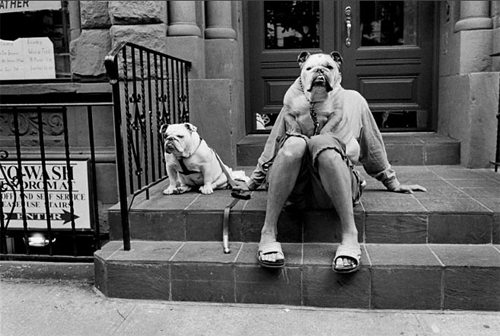Street Photographers for Beginners
Street Photographers for Beginners
Blog Article
Get This Report about Street Photographers
Table of ContentsSome Of Street PhotographersThe Definitive Guide to Street PhotographersStreet Photographers Can Be Fun For EveryoneStreet Photographers - TruthsStreet Photographers Fundamentals Explained
A category of digital photography that records everyday life in a public area. The very publicness of the setup enables the professional photographer to take candid pictures of unfamiliar people, typically without their knowledge. Street professional photographers do not always have a social purpose in mind, however they like to separate and catch minutes which could otherwise go unnoticed (Street Photographers).He was influenced by several of those who affected the road digital photographers of the 1950s and '60s, he was not primarily interested in catching the spirit of the street. The impulse to visually record people in public began with 19th-century painters such as Edgar Degas, douard Manet, and Henri de Toulouse-Lautrec, who worked side by side with professional photographers attempting to catch the essence of city life.
Unlike Atget, photographer Charles Marville was hired by the city of Paris to produce an encyclopaedic file of Haussmann's urban preparation task as it unravelled, thus old and brand-new Paris. While the photographers' topic was essentially the exact same, the outcomes were significantly various, showing the impact of the photographer's intent on the character of the photos he generated.
Offered the fine quality of his photographs and the breadth of material, designers and artists typically got Atget's prints to use as recommendation for their very own job, though commercial rate of interests were hardly his main motivation. Instead, he was driven to photo every last residue of the Paris he loved. The mingled enthusiasm and necessity of his goal sparkle through, resulting in pictures that narrate his very own experience of the city, top qualities that anticipated street digital photography of the 20th century.
Top Guidelines Of Street Photographers
They disclose the city with his eyes. His work and essential understanding of digital photography as an art form acted as motivation to generations of photographers that adhered to. The future generation of road professional photographers, though they likely did not refer to themselves because of this, was introduced by the photojournalism of Hungarian-born digital photographer Andr Kertsz.
Unlike his peers, Brassa used a larger-format Voigtlnder camera with a longer direct exposure time, requiring him to be more computed and thoughtful in his practice than he may have been if utilizing a Leica. (It is believed that he may not have actually been able to pay for a Leica at that time, however he did, nonetheless, utilize one in the late 1950s to take colour pictures.) Brassa's photographs of the Paris abyss illuminated by man-made light were a revelation, and the compilation of the collection that he published, (1933 ), was a major success.
Cartier-Bresson was a champion of the Leica electronic camera and one of the very first digital photographers to maximize its capabilities. The Leica enabled the photographer to engage with the environments and to record moments as they took place. Its relatively little size additionally helped the photographer fade right into the background, which was Cartier-Bresson's recommended method.
Getting The Street Photographers To Work
It is due to the fact that of this basic understanding of the art of image taking that he is often attributed with discovering the tool around once again approximately a century because its innovation. He took photographs for even more than a half century and affected generations of digital photographers to trust their eye and instinct in the moment.
These are the questions I will try to answer: And after that I'll leave you with my very own interpretation of road photography. Yes, we do. Allow's start with specifying what an interpretation is: According to (Street go to this website Photographers) it is: "The act of defining, or of making something definite, distinctive, or clear"
No, absolutely not. The term is both limiting and misinforming. Seems like a road digital photography must be images of a streets right?! And all road professional photographers, besides a handful of absolute beginners, will completely appreciate that a road is not the essential part to road photography, and in fact if it's an image of a street with perhaps a few monotonous people not doing anything of rate of interest, that's not road photography that's a photo of a street.
Our Street Photographers Diaries
He makes a valid factor do not you assume? While I agree with him I'm not certain "honest public digital photography" will this website certainly catch on (although I do kind of like the term "candid photography") since "road digital photography" has actually been around for a lengthy time, with many masters' names attached to it, so I believe the term is right here to remain (Street Photographers).
You can fire at the beach, at a celebration, in a street, in a park, in a piazza, in a coffee shop, at a museum or art gallery, in a metro terminal, at an occasion, on a bridge, under a bridge ...
Yes, I'm afraid we have no choice! Without policies we can not have an interpretation, and without an interpretation we do not have a genre, and without a category we do not have anything to specify what we do, and so we are stuck in a "rules definition category" loophole!
The Main Principles Of Street Photographers

Report this page